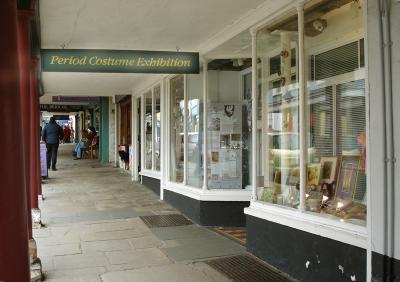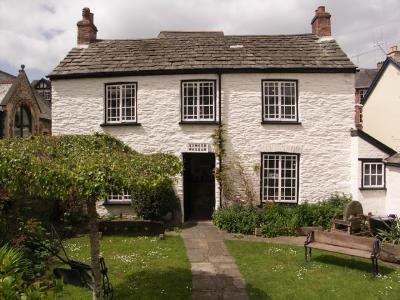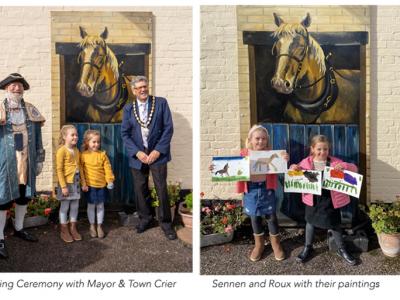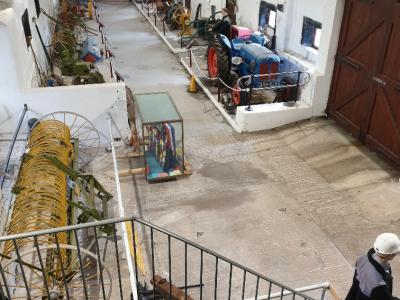Archaeology exhibition showcases prehistoric Dartmoor discovery - The Box, Plymouth
By: Jo Clarke
Added: 26 September 2014
Dartmoor is widely acknowledged to be one of the most important and well preserved Bronze Age (c.2500- c.800 BC) landscapes in Western Europe.
From ceremonial sites such as stone circles and stone rows to the large number of burial sites dotted throughout the landscape – there are few other places where the remains of our prehistoric ancestors are so evident.
And now, this autumn, an exhibition at Plymouth City Museum and Art Gallery is displaying some of the most recent and significant Bronze Age discoveries from the moor for the very first time.
‘Whitehorse Hill: A Prehistoric Dartmoor Discovery’ (on display until 12 December) features a collection of finds that are around 4,000 years old.
They were discovered within a stone burial chest on a remote spot of the moor in 2011. Together they make up one of the best glimpses into life in early Bronze Age Southern England that academics and scientists have ever had.
“This is the most outstanding site to have been excavated locally in over a century,” explains Jane Marchand, Senior Archaeologist at Dartmoor National Park Authority.
“Burials normally provide archaeologists with one of the most important sources of information on the Bronze Age. There are more than 1,500 sites on Dartmoor and a number of them contain stone chests or ‘cists’ like the one at Whitehorse Hill.”
“Unfortunately the acidic nature of the moorland soil means their organic contents rarely survive. The finds from Whitehorse Hill are in an unusually exceptional state of preservation however, which is partly what makes it such an exciting and unexpected discovery.”
‘An extraordinary and internationally important collection’
Analysis of the finds within the cist revealed that it contained the cremated remains of a person of slight build aged 15-25 years old. This description, together with the other grave goods discovered alongside it, suggest this person was a female.
Small textile fragments were also found – possibly the remains of clothing, part of a shroud or a piece of textile that had been used to bind the body. A small amount of charcoaled oak and hazel wood was also present and most likely to have come from the funeral pyre.
The cremated remains and textile were wrapped within an animal pelt made from brown bear. This had been laid on top of a fine leather and textile object.
Concealed within the pelt was a beautifully woven basket with its fine stitching still visible. The contents of the bag included over 200 beads, two pairs of wooden studs and a flint tool. A delicate braided woven band featuring 32 tin studs lay beneath the bag.
‘A rare glimpse into the personal and prized possessions of someone who lived on Dartmoor nearly 4000 years ago’
Investigations have revealed that the carefully woven strands of fibre used to craft the delicate band are made from cow hair. The rivets placed at regular intervals along it are made from tin and would have originally been bright silver. The use of tin for such a decorative object is exceptionally rare.
The group of more than 200 beads is by far the largest number excavated from a single early Bronze Age site in South West England and could have formed a spectacular necklace.
Many of the beads are made from clay not local to Dartmoor. Others are shale from Dorset. A cylindrical tin bead, traces of a second tin bead which has not survived plus seven amber beads are of great significance.
“The nature of these grave goods suggests that the person was someone of high status,” explains Fiona Pitt, Senior Curator at Plymouth City Museum and Art Gallery. “Amber is an exotic resin from the Baltic, associated with supernatural powers and used as an amulet to ward off evil. The tin beads and rivets are the earliest examples of tin objects ever to be found on Dartmoor.”
Two pairs of unique wooden studs or ‘labrets’, which may have been used as body or clothing adornments, are the earliest evidence for wood turning in the UK.
The leather and textile object is a combination of finely woven nettle fibre and thin calf skin and is unique in North Western Europe. Its fine decorative work suggests it was a sash or belt.
“The finds have given us an insight into ancient materials, technology and trade networks,” continues Fiona. “It feels like we’ve been on a real journey with them as we’ve been developing the exhibition and the experts who are analysing them have been learning more. We will have replicas in the exhibition as well as the originals to help visitors realise what they would have originally looked like. It’s an honour for us to be the venue that displays them to the public for the very first time.”
Background Information
‘Whitehorse Hill: A Prehistoric Dartmoor Discovery’ will be on display at Plymouth City Museum and Art Gallery from 13 September to 13 December 2014.
Exhibition opening hours are 10am to 5.30pm Tuesday to Friday and 10am to 5pm Saturday.
Admission to the exhibition is free.
You can find out more about the exhibition and its related events by visiting http://www.plymouth.gov.uk/museumwhitehorsehill
For more information on the excavation visit http://www.dartmoor.gov.uk
The exhibition is a partnership between Plymouth City Museum and Art Gallery and Dartmoor National Park Authority. It’s supported by the Heritage Lottery Fund, Helpful Holidays, the Devon Archaeology Society, the Plymouth and District Archaeology Society, Plymouth College of Art, the University of Exeter and the University of Bradford.
The excavation was carried out with permission of the landowner, the Duchy of Cornwall. It was co-ordinated by Dartmoor National Park Authority and undertaken by archaeologists from the Historic Environment Projects Team at Cornwall Council with assistance from English Heritage and Plymouth University.
Analysis and conservation work has been carried out by Wiltshire County Conservation Laboratory.
Whitehorse Hill is situated on northern Dartmoor on a high moorland ridge, over 600 metres above sea level. It’s a remote area of the moor which stretches between Hangingstone Hill and Quintin’s Man.
There are over 200 cists on Dartmoor of varying sizes and shapes. Like the Whitehorse Hill cist, 90% of them have their long sides orientated in a NW/SE direction but the reason for this, like so many others things from this time, remains a mystery.
Latest news
-

Winter Lecture: Exeter, Topsham and Empire
Topsham Museum
-

Bring a Friend Coffee Morning for current and new volunteers
Topsham Museum
-

Closing of Totnes Fashion and Textiles Museum
Totnes Fashion and Textiles Museum
-

Explore the surreal and take part in The Box’s 2025 Children and Young People’s Art Competition
The Box, Plymouth
-

Torquay Museum Winter Closure
Torquay Museum
-

Torquay Museum Winter Closure
Torquay Museum
-

Refurbishment
Lyn and Exmoor Museum
-

The Box reveals its 2025 exhibition programme
The Box, Plymouth
-

Wishing Volunteers and Visitors a very Happy Christmas!
Topsham Museum
-

Museum Christmas Market
Topsham Museum
-

Museum Assistant vacancy
Newton Abbot Museum
-

Job opportunity at RAMM LGBTQ Creative Project
Royal Albert Memorial Museum and Art Gallery
-

New exhibition brings exciting solo artist to The Box Plymouth
The Box, Plymouth
-

Prizewinners Return
Exmouth Museum and Heritage Centre registered charity 291311
-

Agricultural Display
Dartmoor Prison Museum






